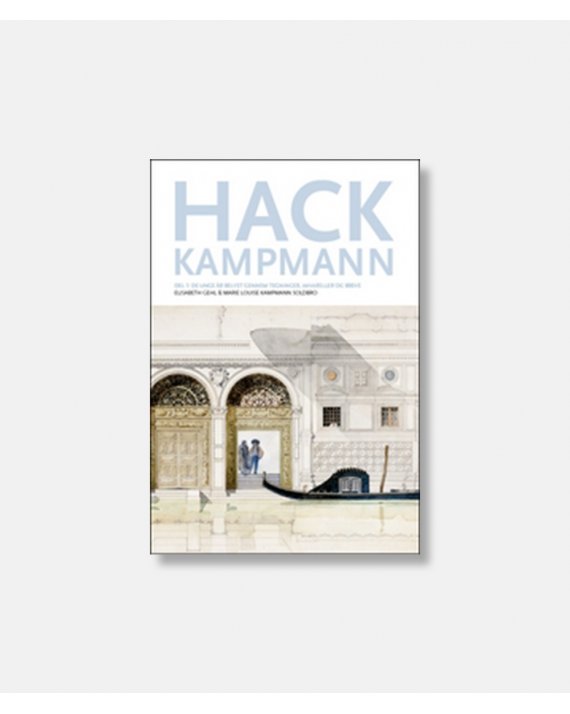
Hack Kampmann del I
DKK 398
9788792420305
New product
About Hack Kampmann (1856–1920) a Danish architect and professor of architecture at the architecture department of the Royal Danish Academy of Fine Arts in Copenhagen and one of the most influential architects in Danish architectural history
About Hack Kampmann (1856–1920) a Danish architect and professor of architecture at the architecture department of the Royal Danish Academy of Fine Arts in Copenhagen and one of the most influential architects in Danish architectural history. He was also the most capable, illustrator and watercolorist among architects in a time when drawing skills were obvious. The book follows and explores his development as a draftsman and painter - and as an architect.
As professor of architecture at the architecture department of the Royal Danish Academy of Fine Arts from 1908 to 1918 he lectured on domestic architecture as well as the great architecture of the world, especially the visual effects of the Greek temple. In his watercolours he managed to capture the overall impression; the characteristic "wet style" seen in the watercolours of Aage Rafn, Steen Eiler Rasmussen and Aarne Jacobsen goes back to Kampmann.
He was a prolific architect, designing private villas, private art museums, commercial buildings, churches, as well as both small state buildings, such as post offices, and large ones such as royal palaces. Among his major works are the Provincial Archives of Northern Jutland (1890–91) in Viborg, Jutland; the Aarhus Theatre (1898–1900); Marselisborg Palace (built 1899–1902 as a wedding gift from the people to Crown Prince Christian (later Christian X); the extension to the Ny Carlsberg Glyptotek in Copenhagen; and the Copenhagen Police Headquarters, Copenhagen (1918-1922).
Kampmann was initially one of the leading Danish proponent of the national romantic style.However, during the 1920s he adopted the Nordic Classicism style, becoming one of its main initiators. His most famous work is one of the culminations of the style, the Police Headquarters in Copenhagen (1918–22) (in a team with Aage Rafn, Holger Jacobsen and F.Fredriksen) he was among the initiators of 1920s Nordic Classicism. This last building was completed after his death in summer 1920 by his two sons, Christian and Hans Jørgen Kampmann, together with Rafn.Kampmann also was responsible for a number of building restoration projects, notably Aarhus Cathedral (1907-20).
Danish language edition. Richly illustrated.
| Author | Elisabeth Gehl , Marie Louise Kampmann Soldbro |
| Format | 34 x 23 cm |
| Published | 2015 |
| Language | Dansk |
| ISBN | 9788792420305 |
| Publisher | Bogværket |
| Binding | Hard cover |
| Page count | 240 |

